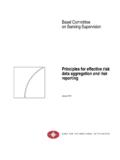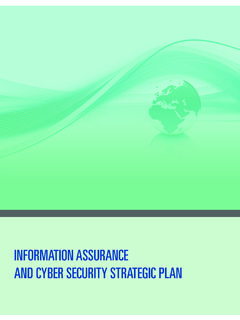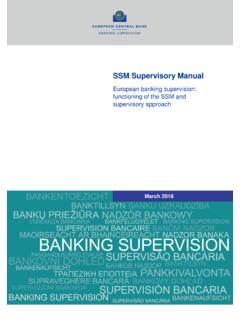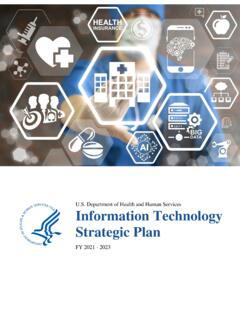Transcription of WHO Accountability Framework
1 1 | P a g e WHO < strong >Accountabilitystrong > < strong >Frameworkstrong > March 2015 2 | P a g e TABLE OF CONTENTS 1. INTRODUCTION .. 3 2. WHO < strong >Accountabilitystrong > < strong >Frameworkstrong > .. 4 GUIDING PRINCIPLES .. 4 AN ENABLING ENVIRONMENT .. 4 Tone at the Top .. 4 Ethical Values and Standards of Conduct .. 5 Complaints and Response Mechanisms .. 5 Clear Roles, Responsibilities, and Authorities .. 5 COMPONENTS AND 6 Governance .. 6 Results-Based Management .. 7 Pillars of < strong >Accountabilitystrong > .. 8 Functional Elements of < strong >Accountabilitystrong > .. 9 Assurance Mechanism .. 11 3. IMPLEMENTATION AND CONTINUOUS 12 ANNEX I DEFINITION OF KEY TERMS .. 13 ANNEX II LIST OF RULES, REGULATIONS, POLICIES AND OTHER DOCUMENTS RELEVANT TO THE WHO < strong >Accountabilitystrong > < strong >Frameworkstrong > .. 14 ANNEX III APPROACH TO IMPLEMENTING THE < strong >Accountabilitystrong > < strong >Frameworkstrong > .. 15 3 | P a g e 1. INTRODUCTION 1. The global context in which the World Health Organization (WHO or the Organization) works necessitates a flexible and agile organization that can respond to rapidly evolving global health needs.
2 In response, the Director-General (DG) of WHO initiated WHO Reform in 2010, an inclusive and Member-State-driven process aimed at adapting the Organization to be effective, efficient, responsive, objective, transparent and accountable. The way in which WHO s priorities are set, how its budget is approved, its resources mobilized and accounted for, and its performance monitored, evaluated, and reported, has changed and continues to evolve. 2. WHO defines < strong >Accountabilitystrong > as the obligation of every member of the Organization to be answerable for his/her actions and decisions, and to accept responsibility for them. < strong >Accountabilitystrong > includes achieving objectives and results in response to mandates and in accordance to the General Programme of Work and Programme Budget, fair and accurate reporting on programme performance, stewardship of funds, and all aspects of performance in accordance with regulations, rules and standards, to its stakeholders in a timely and transparent manner.
3 Each and every WHO staff member plays a significant role in the achievement of results and the stewardship of resources in an ethical and transparent manner. Greater < strong >Accountabilitystrong > will enhance every staff member s sense of ownership of the objectives of the Organization with the reward of contributing to the Organization s successes. 3. < strong >Accountabilitystrong > has always been embedded in the structure of WHO and its operational policies and procedures. However, in response to the evolving environment and to further strengthen WHO s < strong >Accountabilitystrong > and transparency, the 2006 WHO < strong >Accountabilitystrong > < strong >Frameworkstrong > has been revised. The revised WHO < strong >Accountabilitystrong > < strong >Frameworkstrong > is designed to support the Organization s results-based management approach whereby delegated responsibility, authority and < strong >Accountabilitystrong > exist in a decentralized environment at all levels of the Organization, and to underline its commitment to the shared values and culture of < strong >Accountabilitystrong > and transparency.
4 It operates in tandem with WHO s Risk Management < strong >Frameworkstrong > , which is designed to identify and manage the likelihood or impact of a risk, and to improve the probability of achieving the Organization s objectives; and the Internal Control < strong >Frameworkstrong > , which provides the critical systems and structures necessary to ensure that WHO s operational, compliance, and reporting objectives are met. As illustrated in Figure 1, these elements, together, are critical to accomplishing established organizational objectives and goals as expressed in the WHO General Programme of Work (GPW), and the Programme Budget (PB) with enhanced < strong >Accountabilitystrong > and greater transparency. Figure 1: WHO < strong >Accountabilitystrong > System 4 | P a g e 2. WHO < strong >Accountabilitystrong > < strong >Frameworkstrong > 4. The WHO < strong >Accountabilitystrong > < strong >Frameworkstrong > acts as an enabler by providing the overall architecture for < strong >Accountabilitystrong > in the Organization and defining what it entails.
5 It is guided by seven core principles of < strong >Accountabilitystrong > , which form its foundation and provide the basis for implementing < strong >Accountabilitystrong > policies, processes, and tools. Guiding Principles (a) Mutual < strong >Accountabilitystrong > and clarity of organizational responsibility. Along with the Secretariat, the Member States collectively, through the Governing Bodies, and as individual Members, as well as other contributing partners, have distinct responsibilities for delivering on their respective obligations. (b) Alignment of strategic direction and results with < strong >Accountabilitystrong > . Strategic direction and priorities of the Organization are understood and managers are accountable for aligning the strategic direction and objectives, expected results and activities set for their areas of responsibility. (c) Individual and collective commitment.
6 All staff members in the Organization are accountable individually and organizationally. This requires individual and collective commitment to established accountabilities and involves cooperation and collaboration. (d) Highest standards of personal integrity. Organizational values, ethics and behavioural expectations are known, clearly communicated and applied in the Organization, and individuals declare potential conflicts of interest according to ethical standards. (e) Transparency. The Organization will make available reliable and timely information about existing conditions, decisions and actions relating to its activities, in an accessible, visible and understandable fashion, unless the information is deemed confidential. (f) Balanced expectations and capacity. Performance expectations are clearly defined and linked to and balanced with capacity ( , authorities, skills, and resources) to deliver.
7 (g) Continuous monitoring and learning. Feedback is provided and lessons are learned from continuous review and evaluation of the quality, efficiency and effectiveness of programmes, and the achievement of results in order to improve and strengthen performance. An Enabling Environment 5. An enabling environment provides the foundation for effective < strong >Accountabilitystrong > in the Organization, and recognizes that < strong >Accountabilitystrong > is applicable at all levels of the Organization. A strong , supporting culture of < strong >Accountabilitystrong > and transparency is established as a shared value to be demonstrated and implemented by all management and staff across the Organization and embedded in all activities. Important elements of an enabling environment include: Tone at the Top 6. < strong >Accountabilitystrong > is applicable to all levels of the Organization and is championed as a core value of the Organization.
8 WHO senior managers recognize that they must lead by example in order to instill a culture of < strong >Accountabilitystrong > throughout the Organization. 5 | P a g e 7. Senior management is committed to advancing a culture of < strong >Accountabilitystrong > by routinely setting the tone, leading by example, setting clear goals, roles, and responsibilities, and articulating expectations regarding the conduct of staff members. Setting the tone includes espousing a zero-tolerance policy for behaviour not in keeping with WHO s ethical values and standards of conduct at all levels of the Organization, and by encouraging and participating in open dialogue. Ethical Values and Standards of Conduct 8. WHO s ethical values and standards of conduct serve to underpin the culture of < strong >Accountabilitystrong > and transparency. Several instruments provide guidance on the Organization s values and ethics, and exist to support and inform the behavioural standards expected from all staff to act in a responsible manner, with integrity and respect for the policies and procedures of the Organization, to maintain confidentiality and demonstrate corporate loyalty to the Organization, including reporting suspected wrongdoing (whistleblowing).
9 The relevant WHO policies and practices are compiled in the Ethical Principles and Conduct of Staff . 9. All staff members are expected to conduct themselves with integrity and loyalty to the aspirations, goals and values of WHO, and to comply with WHO s Staff Regulations, Rules, and related policies, and to uphold the Standards of Conduct for the International Civil Service (2013). Complaints and Response Mechanisms 10. WHO staff rules and regulations, policies and procedures with respect to administrative appeals, workplace grievances (such as harassment), anti-fraud and whistleblowing provide the guidance on the rights and obligations of staff, and outline the processes for raising and responding to complaints. 11. The Ombudsman, who is neutral and independent (reporting directly to the DG), assists in facilitating communication through informal negotiation and mediation, and helps staff explore options for conflict resolution.
10 The Human Resources Division plays a key role in maintaining a respectful work environment, and in enhancing the administration of justice through informally resolving staff members grievances and formally representing the Organization in the Internal Justice System. The Compliance, Risk and Ethics Department provides confidential advice on ethical issues specifically pertaining to potential conflicts of interest, reporting misconduct or wrongdoing, and protecting whistleblowers. Finally, the Office of Internal Oversight Services is responsible for conducting the related administrative fact-finding investigations in line with its overall mandate. 12. There are currently a number of avenues through which external stakeholders can raise issues or concerns regarding the Organization s actions and decisions. The feedback mechanism used depends on the nature of the issue, level of sensitivity and need for confidentiality.















